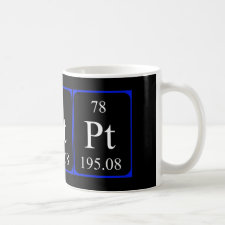
Authors: Dobrzynska J, Dabrowska M, Olchowski R, Zieba E, Dobrowolski R
Article Title: Development of a method for removal of platinum from hospital wastewater by novel ion-imprinted mesoporous organosilica.
Publication date: 2021
Journal: Journal of Environmental Chemical Engineering
Volume: 9
Issue: (4)
Article Number: 105302.
DOI: 10.1016/j.jece.2021.105302
Alternative URL: https://www.sciencedirect.com/science/article/pii/S2213343721002797
Abstract: Pt(II)-imprinted thiocyanato-functionalized SBA-15 materials were prepared by co-condensation of tetraethoxysilane with various amounts of thiocyanatopropyltriethoxysilane in the presence of Pluronic123 and Pt(II) ions. The obtained materials were characterized by physicochemical methods. The adsorption behaviour of the Pt(II)-imprinted thiocyanato-functionalized SBA-15 with respect to Pt(II) ions was studied. Ion-imprinted materials were found to show a high adsorption capacity in a wide range of solution pH and fast Pt(II) adsorption rate. The maximum static adsorption capacity of the ion-imprinted sorbent synthesized of tetraethoxysilane and thiocyanatopropyltriethoxysilane in molar ratio of 18/2 for Pt(II) were 76.4 mg/g. The obtained Pt(II)-imprinted materials show a high selectivity towards Pt(II) ions in the presence of Au(III), Ru(II) and Pd(II) ions. Acidified thiourea solution was found to be the most effective medium for platinum species desorption from the synthesized ion-imprinted sorbents for 5 adsorption/desorption cycles. Each time 92% of platinum species were leached from the material in 1 mol/L thiourea solution without significantly decreasing of its adsorption capacity. The results showed that obtained ion-imprinted mesoporous organosilica could be employed as an effective material for the recovery of platinum from hospital wastewater
Template and target information: platinum ion, Pt(II)
Author keywords: Cisplatin, Carboplatin, Oxaliplatin, Modified SBA-15, urine, Chemotherapy



Join the Society for Molecular Imprinting

New items RSS feed
Sign-up for e-mail updates:
Choose between receiving an occasional newsletter or more frequent e-mail alerts.
Click here to go to the sign-up page.
Is your name elemental or peptidic? Enter your name and find out by clicking either of the buttons below!
Other products you may like:
 MIPdatabase
MIPdatabase









